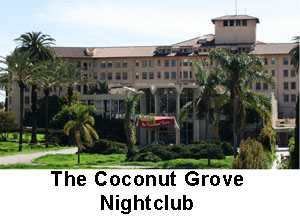Vintage 1950s Music
Standing on the Corner
Standing on the Corner is a popular song written by Frank Loesser,
published in 1956. It was introduced by Shorty Long, Alan Gilbert, John Henson, and Roy Lazarus in the Broadway musical, The Most Happy Fella.
published in 1956. It was introduced by Shorty Long, Alan Gilbert, John Henson, and Roy Lazarus in the Broadway musical, The Most Happy Fella.
The song was made popular by the Four Lads recorded March
1, 1956. The recording was released by Columbia Records. It first reached the Billboard charts on April 28,
1956. It peaked at #3 on each of the various charts at the time: the Disk
Jockey chart, the Best Seller chart, the Juke Box chart, as well as the
composite chart of the top 100 songs. The flip side was My Little Angel. Jimmy
Arnold,
was the lead tenor for The Four Lads in 1956. Arnold is
sometimes erroneously listed as the song's co-author. A
version by The
King Brothers became
popular in the United Kingdom in 1960 when the musical was staged in London's
West End.
On February 9, 2010, the Irish
group Celtic
Thunder released
their 4th album entitled It's Entertainment. This album, meant to
pay homage to past musical styles, features their youngest member Damian McGinty singing Standing on the Corner. Celtic Thunder's
DVD of the same name features McGinty dressed in a sweater and cabbie
performing the number.









